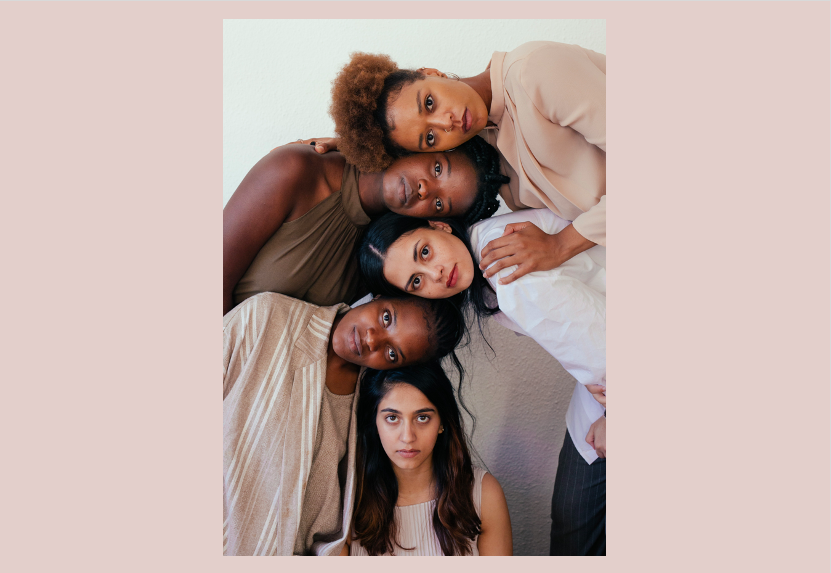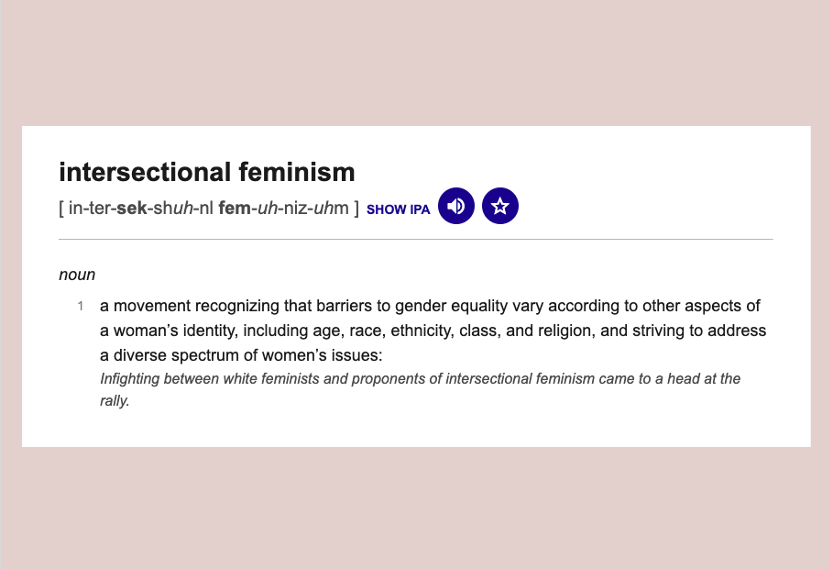How useful is the concept of 'global sisterhood'?
Is feminism really intersectional?
By Sophie Rumble / 21 November 2020

Illustration by Elisabetta Panico
Sisterhood can be defined as ‘the solidarity of women based on shared conditions, experiences, or concerns’. The idea behind this is that women are universally united in their shared experience of oppression at the hands of patriarchy, forming a common ground between women from which they can essentially bond over.
Whilst on the surface this appears to be all very lovely, there are many other complex factors at play here, which are worth unpacking. The concept of a universal, global sisterhood has received critique over the years, namely because it tends to be a term utilised and employed by liberal, white, western feminists who claim unity with their ‘sisters’ due to the perceived ‘common oppression’ experienced. While I’m sure that anyone who considers themselves to be a feminist would be concerned with the marginalisation and oppression of women, the issue here is that the conversation tends to be dominated by white western women who have decided that their experiences of patriarchy are universally applicable to all other women.
The problem with attempting to build unity off of a common source of oppression – namely patriarchy – is that patriarchy manifests differently for every woman, depending on her position within society. And, as such, every woman’s priorities are different because everyone’s lived experiences hugely differ. In grouping all women across the globe together, under the complex umbrella of patriarchy, we run the risk of overlooking and ignoring the differences between women, which doesn’t account for the complexities and many forms that womanhood takes.
This concept of womanhood, as so defined by the white, heteronormative, cis-gendered, able-bodied, middle-class woman, lacks intersectionality and nuance and is not reflective of so-called global sisters. Ultimately, the concept of a global sisterhood fails to properly consider the power structures that divide women. To ‘empower women’ in the way that liberal, white, western feminists conceive of empowerment is not necessarily empowering for non-white, non-western, non-middle-class women. Not taking intersectionality and differences into account when discussing ‘women’s issues’ is neatly captured by bell hooks. Here she challenges the objectivity and universality of white western notions of womanhood and feminism;
“The process begins with the individual woman’s acceptance that (American) women, without exception, are socialized to be racist, classist and sexist, in varying degrees, and that labelling ourselves feminists does not change the fact that we must consciously work to rid ourselves of the legacy of negative socialization.”

Photo by RF._.studio from Pexels
Here hooks highlights that there cannot be a simple one size fits all solution to gender injustices, and to attempt to construct one creates tensions between the ‘global sisters’.
This concept has played out time and time again throughout history, where feminism and global sisterhood is solely constructed around white women’s experiences, which are considered to be both objective and able to speak for all experiences. Take the example of voting rights in the UK, where ‘women’ supposedly obtained the right to vote in 1918, when in fact this was only white women and was extended to black women nearly half a century later in 1965. This is a pertinent example of the hierarchies and power structures that exist so pervasively and prevalently within the category of woman, and how using white women as the bench-mark of womanhood will only create superficial, ‘top-down’ change.
Here, we are led to another issue with the concept of global sisterhood. White women, in declaring to be ‘sisters’ with black women, inextricably bound by their shared oppression, fail to recognise their complicity in upholding and maintaining the very systems of oppression that black women are marginalised by. By virtue of their whiteness, they uphold racist systems and act as an oppressor for their black ‘sisters’ which complicates the notion of attempting to find unity or respite in their so-called ‘shared’ experiences of marginalisation. Ultimately, the point is that realities differ and vary hugely across the category of woman – an area of empowerment for one woman might be an area of oppression for another, and so attempting to find a single area of common ground will always be both uncomfortable and problematic.
It is also worth noting the use and appropriation of the word ‘sister’. ‘Sister’ and ‘sis’ are used as a symbol of solidarity and community in the black community, holding immense cultural significance, and representative of the shared experiences and suffering that black women alone face. With this in mind, it is perhaps worth questioning whether the use of the word ‘sister’ is useful at all, perhaps really all it is doing is causing more harm than good.

Let’s take a more modern-day example, namely how the ultimate sign of marginalisation of Afghan women under the Taliban is that women are supposedly forced to wear the hijab.
This idea has been supported and sustained by mainstream media and public figures, such as Laura Bush who, post 9/11, delivered a radio address detailing the ‘brutal oppression of [Muslim] women’ and how the ‘fight against terrorism is also a fight for the rights and dignity of women’. Hence, the western feminists must take it upon themselves to ‘save’ their oppressed sisters from this persecution, which reminds me of Spivak’s famous quote; ‘white men are saving brown women from brown men’ – but here we can replace white men with white women. This imperialist notion of ‘unveiling’ the Muslim woman, showing her freedom, as per the western understanding of empowerment, demonstrates a huge lack of understanding and respect for cultural differences. Lumping all Muslim women who choose to wear the hijab together and declaring them oppressed, is simply imposing western ideas of empowerment other women, sustaining colonial discourses. You are only a few google searches away from discovering that wearing the hijab is as much as symbol of their faith as it is a marker of social status, women are hardly waking up each morning and having it forced upon them.
Perhaps, it is time to rethink the notion of global sisterhood; rather than attempting to find commonalities between women’s experiences, we should instead embrace the difference. And, as such, this is where intersectional feminism is necessary in order to unite women across borders, races, classes, and sexualities. If we have any hope at salvaging unity between women, then we must remain aware and sensitive of the political, social and systemic differences that divide us. Then, perhaps we can move beyond the concept of global sisterhood and towards a more inclusive, intersectional feminism that works within and across cultural differences and attempts to dismantle rather than reinforce hierarchies and systems of power. As Nawal El Saadawi so aptly puts it; ‘the best support Western feminists could give their global sisters, was to listen first and speak later, following the lead of and partnering with local feminists, giving economic and other support from a position of ‘solidarity’ rather than ‘saving”.
Art by
Words by
Share this article

